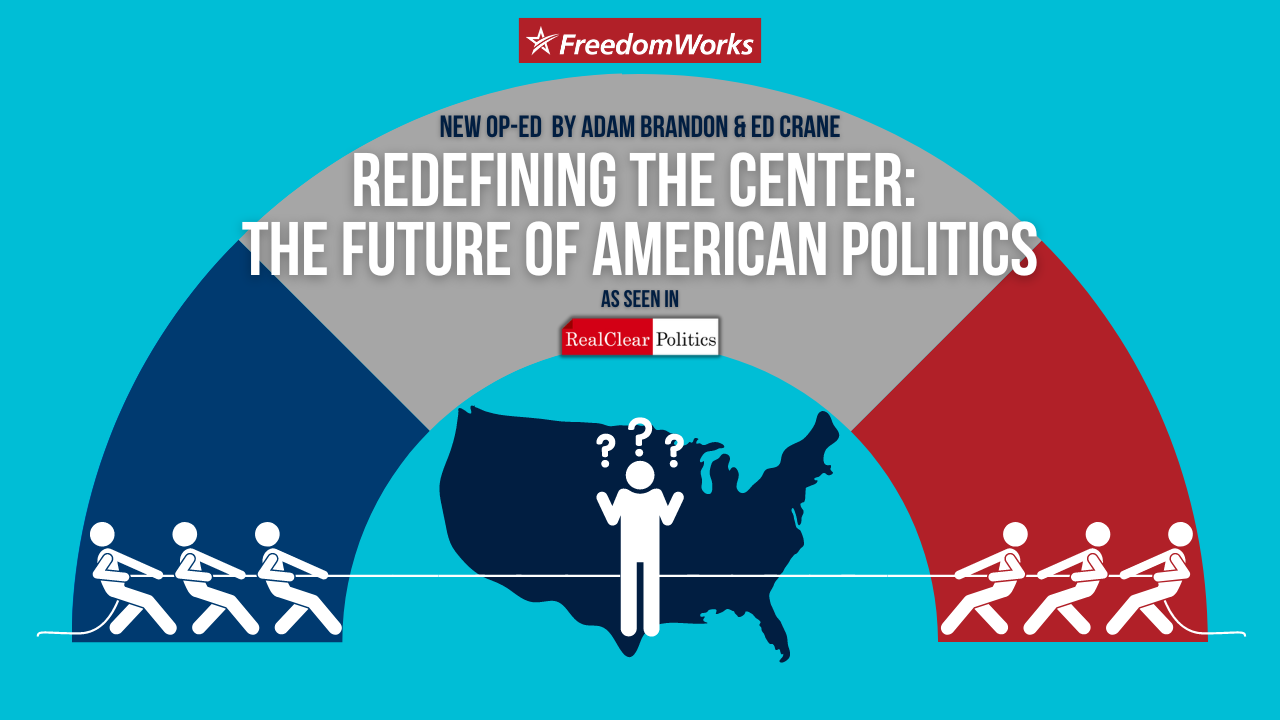Redefining the Center: The Future of American Politics

America is undergoing a political realignment. Donald Trump has destroyed the three-legged stool of the GOP’s Reagan coalition: free market libertarians, social conservatives, and military hawks. Trump’s new GOP is built on aggrieved working-class voters who instead prioritize the waging of a culture war. In response, Democrats now focus on identity politics that can appeal to a coalition of wealthy, poor, and young city dwellers.
But left behind in this realignment are the suburban swing voters – the college educated, younger, upper income, and socially tolerant soccer moms and dads who have decided elections in this country for decades.
The gerrymandering employed by the two parties means that out of the 435 congressional districts, Republicans are guaranteed to win 200 seats and Democrats will win roughly the same number. In the entire country, this leaves only a few dozen competitive seats, perhaps only 30, with the ability to decide who controls our nation’s path forward.
We are a divided country, but not 50-50. In Gallup’s most recent April survey, only 30% of Americans considered themselves Republican, 41% as independent, and 27% as Democrat. We are actually a 30-40-30 country, and that 40% of independent voters have the power to decide our future.
These independent voters tend to be younger: It’s important to note that 50.3% of the current electorate was born after 1983. Over the past 20 years, American voters have grown increasingly independent. This trend is going to continue. While only 33% of Baby Boomers consider themselves independent, over half of Millennials and Gen Z self-identify as independent.
Most House candidates win their party’s nomination by appealing only to the most conservative or liberal voters. But this model does not work in the 30 swing districts, because the suburban, independent voter is turned off by the same messages that appeal to the Republican and Democrat voter base.
Ed Crane identified the beginning of the trend that is now reshaping American politics in the early 1980’s when he founded the Cato Institute. In a 1985 Washington Post interview, Crane said, “I think there is a broadly defined libertarianism among yuppies. They have a tolerant view on social issues, a deep skepticism of government control of the economy. The parties split those concerns. So where do you go?”
The suburban independent believes in tolerance and choice. Tolerance means a live-and-let-live ethos to keep government and politics out of our personal lives. Choice means greater economic empowerment for their families in education, retirement, and health care. But the GOP hard line on social issues alienates these voters. As does the Democrats’ focus on social engineering and massive tax and spending schemes.
While it’s a popular refrain to claim that reforming entitlements is a political “third rail,” this group worries that programs like Social Security and Medicare will go bankrupt before they get to enjoy the benefits. They know change is needed. Approximately 78% of Gen X and 71% of Millennials agreed with the statement, “I worry about the Social Security program running out of funding in my lifetime.”
These entitlements are the driving force behind our soon-to-be $50 trillion debt. This demographic knows they’ll be footing the bill – not to mention shifting more responsibility for health care and retirement income to the federal government. Polling conducted by the Bullfinch Group shows they want a small and effective government, since 72% of independent voters believe future government spending will result in them paying higher taxes. It’s not surprising that 67% want to see an overall decrease in spending.
Even on the contentious issue of abortion, these voters want compromise. They support neither abortion-on-demand nor an absolute ban. Most believe in a 15-week threshold where the procedure can remain legal. They are perfectly comfortable with their gay neighbors, but not with mature adult content in their young children’s curriculum. Again, they see a sensible middle ground. A shorthand way to describe these voters is classical liberal, or small “l” libertarian.
As the parties recruit for House races, look to see who wins these 30 suburban swing districts. In a fractured government, the center will be where consensus is formed and common ground is found. Find a way to consistently resonate with the political center and you’re in the political driver’s seat for years to come, not coincidentally with a worldview consistent with the nation’s Founders.
—
Ed Crane is the founder and president emeritus of the Cato Institute.
Adam Brandon is the president of FreedomWorks and co-author of “America in Perspective: Defending the American Dream for the Next Generation.”



